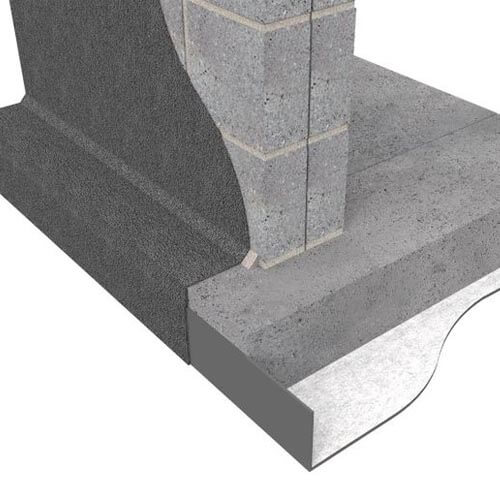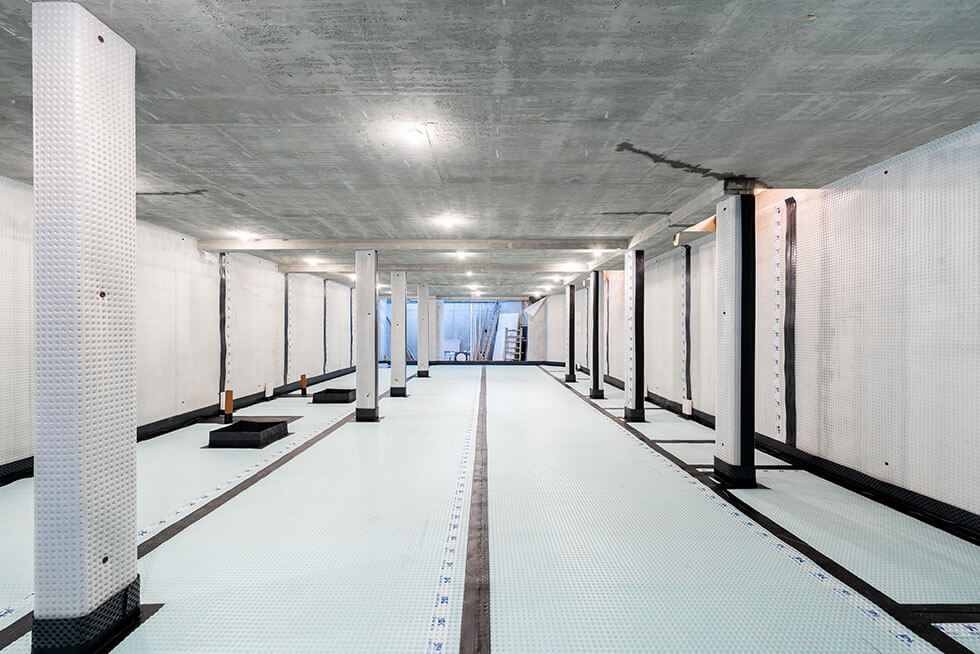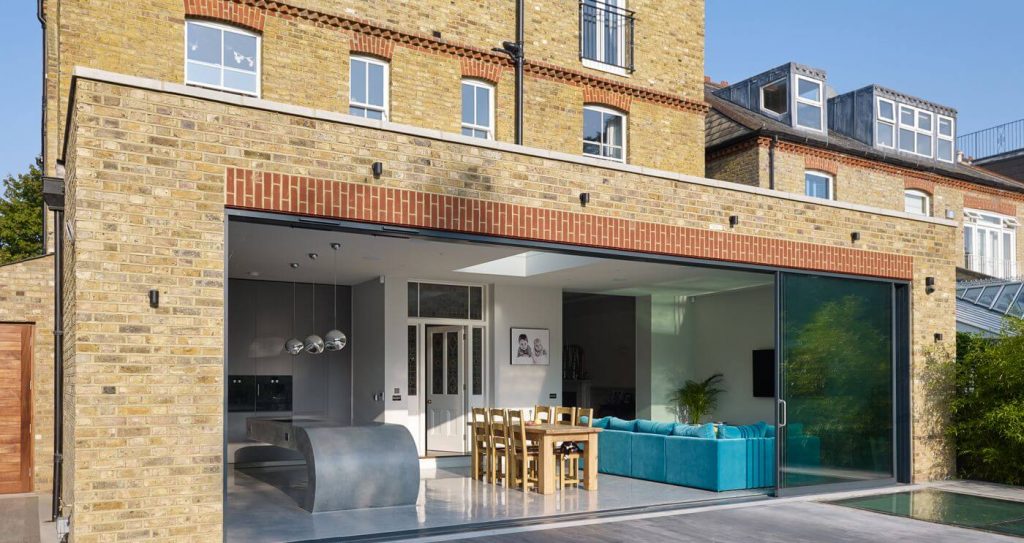01732 360 095
Within the construction industry, terminology can often complicate what should be straightforward concepts and lead to confusion. A noteworthy example are the terms ‘waterproof cement’ and ‘waterproof concrete.’ Whilst these terms are often used interchangeably, in this article, we discuss what they really mean and how they fit into the world of waterproofing solutions for construction projects.
The Basics Explained
‘Waterproof cement’ and ‘waterproof concrete’ essentially describe the same thing. Cement and mortar are key ingredients in making concrete – in fact they are the essential binder that holds the aggregate together. When we talk about making either of them waterproof, we’re really describing ways to stop water from penetrating through our finished concrete structure, ensuring the durability of structures that face exposure to moisture.

Is Concrete Naturally Waterproof?
When designed and placed correctly, in accordance with BS EN 1992 (Eurocode 2: Design of Concrete Structures) and with crack widths limited to 0.2mm, concrete is inherently waterproof.
However, for an entire structure to be completely waterproof, we are relying on perfect placement and compaction of the concrete. Unfortunately, we cannot guarantee this, and nearly all failed structures will leak where the concrete is not – at joints, cracks, or where the concrete has been poorly compacted.
To ensure that our concrete structure is genuinely waterproof, additional measures are necessary. These might include:
- Waterbars or injection hoses in the construction joints
- Pre-Applied ‘Type A’ waterproofing membranes
- Concrete additives, such as plasticisers, superplasticisers and pozzolans
- Post-applied ‘Type A’ waterproofing membranes, applied to the surface of the concrete
- If all else fails, a full internal ‘Type C’ cavity drain waterproofing system
Cementitious Waterproofing Membranes
Another similar and potentially conflicting piece of terminology is cementitious waterproofing membranes. Unlike waterproof concrete or waterproof cement, which describe the concrete structure itself, cementitious membranes create a waterproof barrier, usually to the internal surface of the structure, that stops water from penetrating through.
Cementitious waterproofing membranes are especially useful for areas that need constant water protection – such as water tanks, basements, or other below-ground structures.
Choosing the Right Waterproofing System
Choosing the right waterproofing system starts with understanding the unique needs of your project. Factors such as the structure’s intended purpose, the environmental conditions it will face, and the method of construction all play a crucial role in the decision-making process. For projects that demand protection, we provide a variety of specialist products specifically designed to handle even the most challenging requirements.

Our Advanced Waterproofing Systems
At Newton Waterproofing, we’ve developed cutting-edge solutions for a wide variety of projects. These include:
- The HydroBond System: A high-performance, Type A waterproofing solution, either pre-applied below the concrete raft/slab and wall building line, or post-applied where conventional formwork is removed to expose the outside of the basement walls.
Once installed, the HydroBond System provides a continuous barrier around the full extent of the structure, protecting against both ground water and ground gases such as radon, methane, and carbon dioxide.
- The HydroCoat System: An internal Type A waterproofing solution for projects that require an internally applied membrane to resist water ingress.
Waterproofing barriers that can be applied to the internal side of the structure include a variety of liquid-applied membranes or slurries that can be installed either by spray machine, trowel, brush, or by roller directly onto the internal wall surface.
- The HydroTank System: An integral Type B waterproofing solution for projects that require the below-ground structure itself to be integrally waterproof and to act as the primary resistance to water ingress.
This System includes a selection of BDA certified waterbars, waterstops, flanges, sealants and capillary blocking treatments that are used to seal the joints and penetrations through the concrete and achieve an effective Type B solution.
- The CDM System: A comprehensive Type C waterproofing system and will usually be suggested as one of the forms of waterproofing to provide superior levels of protection against water ingress and where a completely dry internal environment is required.
This maintainable basement waterproofing solution is ideal for both new-build basements and refurbishment projects..
Why Trust Professional Waterproofing?
Opting for professional waterproofing solutions ensures:
- Comprehensive designs to protect against water
- Expert installation by trained specialist contractors
- Installation guarantees for peace of mind.
- Ongoing technical support.
How Long Will Waterproof Cement Last?
Waterproof cement, or in this case waterproof concrete, is integral to the design and structure of your entire project. This is why its discussion and design is classified under ‘Type B’ integral waterproofing, where the structure itself acts as the primary resistance to water ingress.
Therefore, when designed and installed correctly, waterproof concrete has a lifespan the same as the building within which it is installed.
Future-Proofing with Modern Solutions
Today’s waterproofing systems aren’t just about solving immediate issues – they’re built to handle future challenges too. At Newton, our products are designed with durability and adaptability in mind, so your structures remain protected for years to come.
Ready to Take the Next Step?
Whether you’re working on a brand-new project or upgrading an existing structure, choosing the right waterproofing system is critical to long-term success. That’s where Newton Waterproofing comes in.
Get in touch with our expert technical team to find the ideal solution for your project. We’ll guide you through product selection, application tips, and everything in between to ensure your project is a success from start to finish.
Speak to our friendly, expert team
Our staff are able to provide guidance for projects of all sizes, whether you require some general advice about damp or waterproofing, or support with technical drawings and specifications.

















